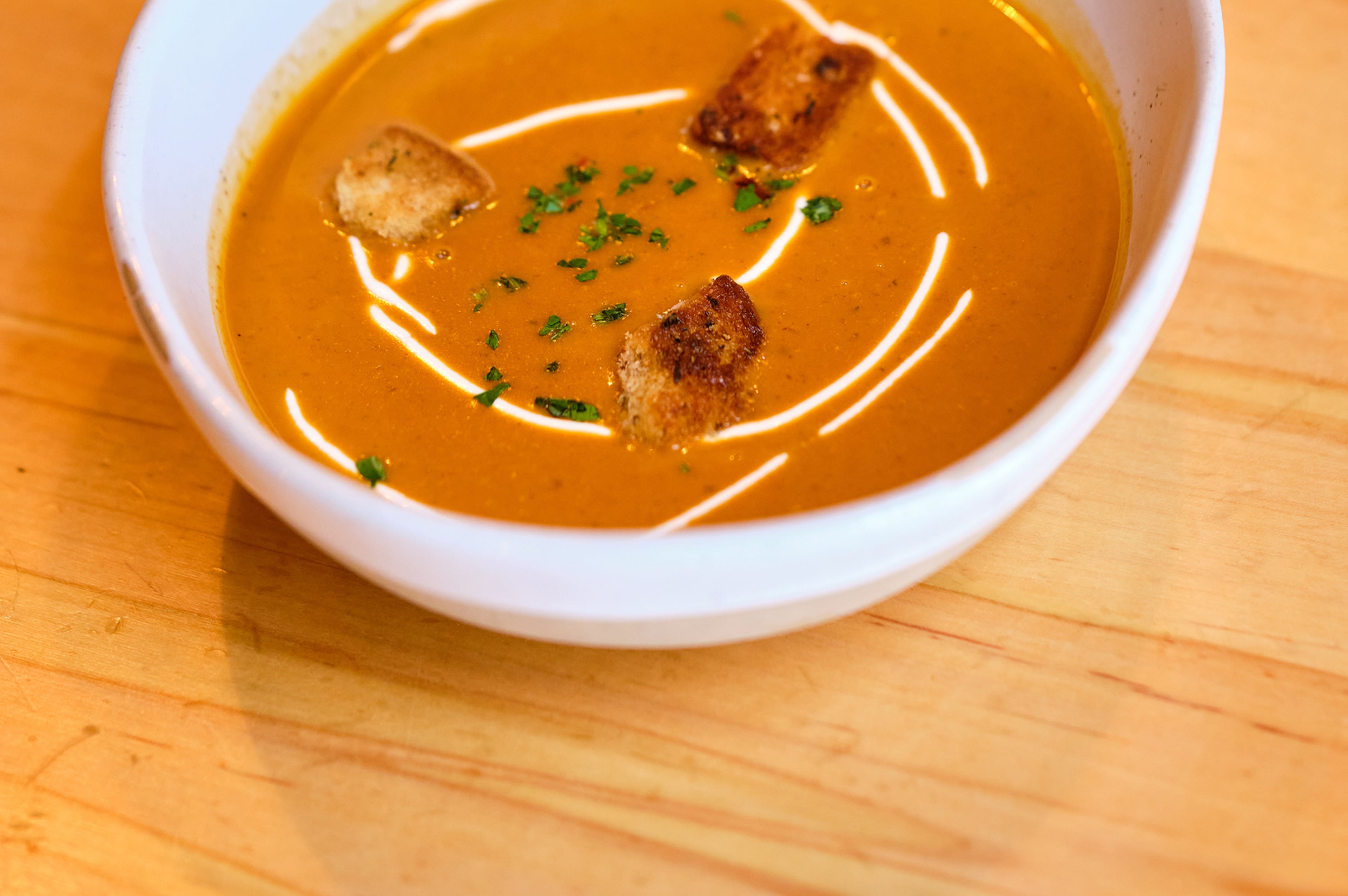Pantry staples shine in these 10 pasta recipes
There are few meals easier or cheaper to throw together on a weeknight than pantry pastas. Keep a few pounds of assorted pasta shapes and a handful of favorite canned, dried and/or preserved foods in the kitchen, and you can have dinner done in less than an hour without a trip to the grocery store.
Pantry pastas are also some of the easiest recipes to riff on; the easiest way to come up with your own pantry pasta recipes is to base them around one key flavor component, like tomatoes or canned beans. You’ll find 10 recipe ideas below, but don’t let them be the limit.
RECIPES
Each of the recipes below are based around the main flavor component of the pasta dish: tomatoes, cheese, beans, briny foods and cured meats. And within each category, there are two options — one classic and one variation. The twists are intended to be idea-starters, so feel free to play around with the foods you’ve already got in your pantry to make your own recipe.
Tomatoes
Tomato sauce is the classic pantry pasta topper. All you really need is a can of tomatoes and an aromatic ingredient or two and you’re well on your way to dinner. Marcella Hazan’s tomato sauce with onion and butter is internet-famous; here, we’re adding a Parmesan rind for additional umami and then, in the variation, using the sauce to prepare risotto-like Assassin’s spaghetti, a spicy flavor-packed dish made with reduced sauce.
Pasta with Marcella Hazan Sauce
Use an immersion blender to puree one 28-ounce can of tomatoes in a Dutch oven. Add half an onion (peeled), 4 tablespoons unsalted butter, one Parmesan rind and a few generous pinches of salt. Bring to a rapid simmer over medium-high heat, then reduce the heat to medium-low and simmer until the onion is soft and the sauce is flavorful, about 1 hour. Season to taste with salt. Discard the onion half and Parmesan rind. About 20 minutes before the sauce is finished, boil and drain 1 pound pasta in salted water until al dente. Add the pasta to the sauce in the Dutch oven, stir well to combine, and serve topped with the cheese of your choice.
Per serving, based on 4: 592 calories (percent of calories from fat, 22), 18 grams protein, 99 grams carbohydrates, 11 grams total sugars, 6 grams fiber, 14 grams total fat (8 grams saturated), 32 milligrams cholesterol, 983 milligrams sodium.
Variation: Chili Crisp Assassin’s Spaghetti
Make the Hazan sauce as written. When the sauce is finished, heat 1/4 cup extra-virgin olive oil and 1 to 2 tablespoons chili crisp in a large, deep skillet over medium heat until shimmering. Add 8 ounces dried spaghetti and turn to coat in the oil. Ladle in about 1 1/2 cups sauce and 1 1/2 cups water. Bring to a simmer. Cook, stirring frequently, until the sauce has been fully absorbed and the pasta starts to fry in the oil. Add another cup of sauce and cup of water and repeat the cooking process. Continue to repeat until the pasta is tender and browned. Serve drizzled with additional tomato sauce and chili crisp.
Per serving: 1,006 calories (percent of calories from fat, 47), 21 grams protein, 114 grams carbohydrates, 19 grams total sugars, 9 grams fiber, 54 grams total fat (18 grams saturated), 64 milligrams cholesterol, 1,961 milligrams sodium.
Cheese
Classic roux-based macaroni and cheese offers the perfect canvas for pantry pasta riffs. Add in spices or flavorful pastes to the butter-flour mixture, then stir in whatever mix-ins you’d like towards the end. For a spicy and deeply savory take, add white miso to the roux and chopped cabbage kimchi before serving.
Classic Stovetop Macaroni and Cheese
Boil and drain 1 pound short pasta, such as shells or macaroni, in salted water until al dente. Meanwhile, melt 4 tablespoons unsalted butter in a Dutch oven over medium heat. When the butter is foamy, whisk in 1/4 cup all-purpose flour. Continue to whisk until the mixture turns very foamy, lightens in color and no longer tastes floury, about 1 minute. Gradually whisk in 4 cups milk. Continue to cook, whisking frequently, until the sauce thickens slightly and comes to a simmer, about 5 minutes. Remove from the heat. Gradually whisk in 1 pound grated melty cheese, such as medium cheddar, Monterey Jack, Gruyere or a combination, until smooth. Season to taste with salt and pepper. Stir in the pasta and serve.
Per serving, based on 4: 1,115 calories (percent of calories from fat, 45), 49 grams protein, 105 grams carbohydrates, 13 grams total sugars, 4 grams fiber, 56 grams total fat (32 grams saturated), 164 milligrams cholesterol, 1,113 milligrams sodium.
Variation: Miso-Kimchi Macaroni and Cheese
Add 2 tablespoons miso to the melted butter, whisking to combine, before adding the flour. Add 1 cup drained and chopped kimchi, along with the pasta, to the finished sauce.
Per serving, based on 4: 1,154 calories (percent of calories from fat, 44), 51 grams protein, 109 grams carbohydrates, 17 grams total sugars, 5 grams fiber, 57 grams total fat (32 grams saturated), 162 milligrams cholesterol, 1,298 milligrams sodium.
Beans
Canned beans add vegetarian protein and heft to pantry pastas; stew-like Italian pasta e ceci is a classic example of the form. Even without extra additions, it’s far more flavorful than the sum of its parts. But if you want to amplify dinner, take inspiration from Moroccan tagine for a spice-heavy variation.
Pasta e Ceci
Heat 1/4 cup extra-virgin olive oil over medium heat. When the oil starts to shimmer, add 4 cloves minced garlic and cook, stirring, until softened and aromatic. Add 1/4 cup tomato paste and continue to cook, stirring, until the paste starts to stick to the bottom of the pot and caramelize, 3 to 5 minutes. Add the beans and liquid from two 14-ounce cans of chickpeas and 2 1/2 cups water. Season to taste with salt and pepper, increase the heat to high and bring to a boil. Once the water is boiling, add 8 ounces short pasta, such as orecchiette. Continue to boil until the pasta is very tender. If the stew gets so thick that the pasta starts to stick to the bottom of the pot, decrease the heat to medium-high and add additional water, 1/4 cup at a time, to loosen. Remove from the heat and serve topped with grated Parmesan or Pecorino cheese.
Per serving: 615 calories (percent of calories from fat, 29), 22 grams protein, 89 grams carbohydrates, 10 grams total sugars, 15 grams fiber, 20 grams total fat (2 grams saturated), no cholesterol, 996 milligrams sodium.
Variation: Tagine-Inspired Pasta e Ceci
After the garlic has softened, add 1 teaspoon ground coriander, 1 teaspoon ground cumin, 1/2 teaspoon ground ginger and 1/4 teaspoon ground cinnamon. Cook until aromatic, about 30 seconds, before adding the tomato paste as above. Add half a preserved lemon, finely chopped, along with the beans. Serve with crumbled feta.
Per serving: 622 calories (percent of calories from fat, 29), 22 grams protein, 91 grams carbohydrates, 11 grams total sugars, 15 grams fiber, 20 grams total fat (2 grams saturated), no cholesterol, 998 milligrams sodium.
Salty and Briny Foods
Salty and briny foods, like anchovies, capers and olives, offer the most bang for your buck when it comes to flavorful pantry ingredients. In addition to salinity, they bring layers of umami to any sauce. The classic briny sauce is pasta puttanesca, which also packs in tomatoes, garlic and red pepper flakes. And for a twist? Build a sauce around a muffuletta sandwich, with pickled vegetables instead of the anchovies and provolone cheese for a melty topping.
Pasta Puttanesca
Boil and drain 1 pound long pasta, such as spaghetti or linguine, in salted water until just shy of al dente. Save 1/2 cup pasta cooking water. While the pasta cooks, heat 1/2 cup extra-virgin olive oil in a large deep skillet over medium heat. When the oil is shimmering, add 1/2 cup drained capers, 1/2 cup chopped kalamata olives, 8 finely chopped garlic cloves, the drained anchovies from one 2-ounce tin and 1/4 to 1/2 teaspoon red pepper flakes. Cook, stirring frequently, until the anchovies have broken up and dissolved into the oil, about 5 minutes. Add one 14-ounce can crushed tomatoes. Stir well to combine, increase the heat to medium-high, and bring to a rapid simmer. Add the pasta and 1/4 cup of the reserved cooking water. Cook, stirring constantly, until the sauce emulsifies and coats the pasta, 2 to 4 minutes. (If needed, stir in extra cooking water, 1 tablespoon at a time, to loosen the sauce.) Remove from the heat. Stir in a handful of chopped fresh parsley if you have it and serve topped with grated Pecorino and a drizzle of extra-virgin olive oil.
Per serving, based on 4: 743 calories (percent of calories from fat, 38), 20 grams protein, 96 grams carbohydrates, 8 grams total sugars, 6 grams fiber, 32 grams total fat (5 grams saturated), 9 milligrams cholesterol, 981 milligrams sodium.
Variation: Muffuletta Pasta
To the shimmering olive oil, add 1/2 cup finely chopped oil-packed olives, 1/2 cup finely chopped giardiniera, 1/2 cup finely chopped roasted red peppers, 1/4 cup finely chopped pepperoncini peppers, 4 finely chopped garlic cloves and 1 tablespoon finely chopped capers. Reduce the tomatoes to 1 cup. Add the pasta and pasta water as written above. Once the sauce is emulsified, remove from the heat and top with 1/2 cup diced provolone cheese slices. Cover and let the cheese melt in the residual heat, then serve topped with chopped fresh parsley if you have it.
Per serving, based on 4: 712 calories (percent of calories from fat, 40), 19 grams protein, 88 grams carbohydrates, 4 grams total sugars, 4 grams fiber, 31 grams total fat (6 grams saturated), 8 milligrams cholesterol, 632 milligrams sodium.
Cured Meat
Like anchovies, cured meats offer tons of flavor. Plus they last for ages in the fridge. Italian guanciale is the classic flavor base for carbonara, but it’s also common to see bacon in variations on the recipe. Taking the bacon variation further, add sauerkraut and caraway seeds to create a German-inspired meal with the same richness as carbonara.
Pasta Carbonara
Boil and drain 8 ounces long pasta, such as spaghetti or bucatini, in salted water until al dente. Save 1/4 cup pasta cooking water. While the pasta is cooking, cook 1/2 cup diced guanciale in a large skillet over medium heat until much of its fat has rendered and the meat has turned brown, about 10 minutes. While the guanciale cooks, whisk together 1 large egg, 3 egg yolks and 1/4 cup grated Parmesan cheese in a large bowl until thoroughly combined. When the bacon is cooked, add the cooked pasta and toss well to coat the pasta in the bacon fat. Transfer to the bowl with the egg mixture, add the reserved pasta water, and stir to temper the eggs. Return the entire pasta mixture to the skillet. Turn the heat to medium-low and cook, stirring constantly with the tongs, until the sauce begins to thicken and coat the pasta, 1 to 2 minutes. Keep a careful eye on any hot spots to prevent the eggs from scrambling. Immediately transfer to a large bowl and serve with additional Parmesan.
Per serving, based on 2: 797 calories (percent of calories from fat, 40), 32 grams protein, 88 grams carbohydrates, 4 grams total sugars, 4 grams fiber, 36 grams total fat (12 grams saturated), 417 milligrams cholesterol, 1,165 milligrams sodium.
Variation: German-Inspired Carbonara
Substitute 2 diced slices of bacon for the guanciale. Add 1/2 cup drained sauerkraut and 1/2 teaspoon caraway seeds to the skillet once the bacon has browned. Serve the pasta topped with additional sauerkraut and lots of freshly ground black pepper.
Per serving, based on 2: 685 calories (percent of calories from fat, 32), 28 grams protein, 90 grams carbohydrates, 4 grams total sugars, 6 grams fiber, 24 grams total fat (8 grams saturated), 397 milligrams cholesterol, 1,247 milligrams sodium.


